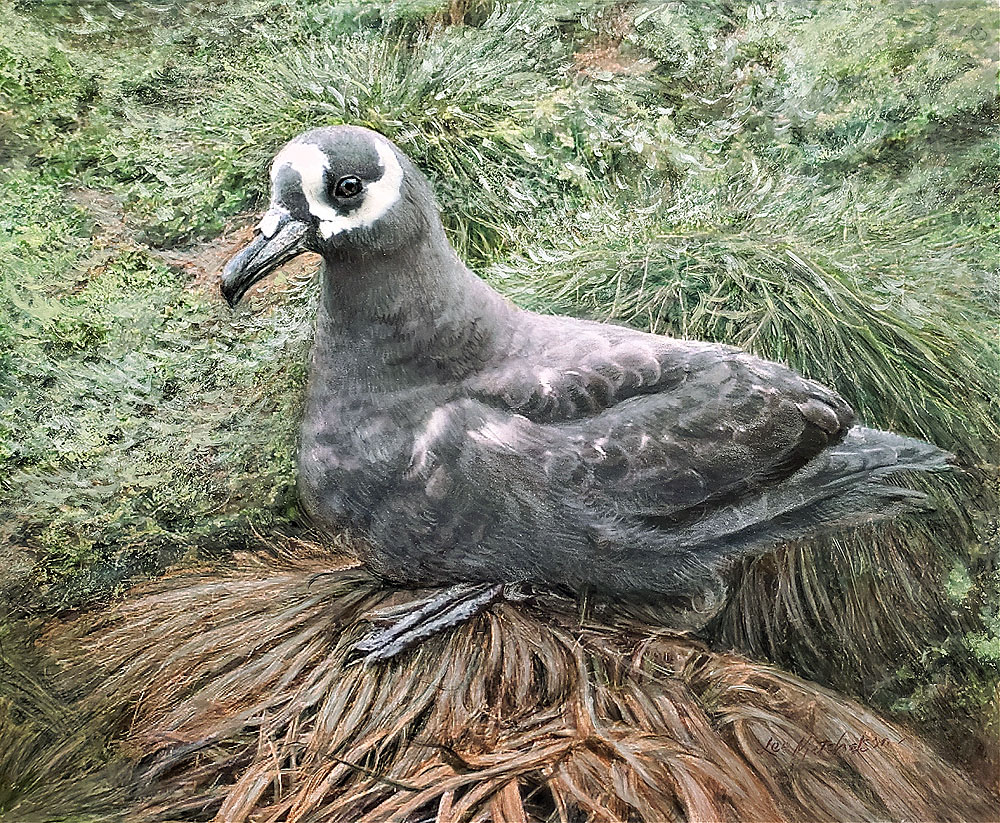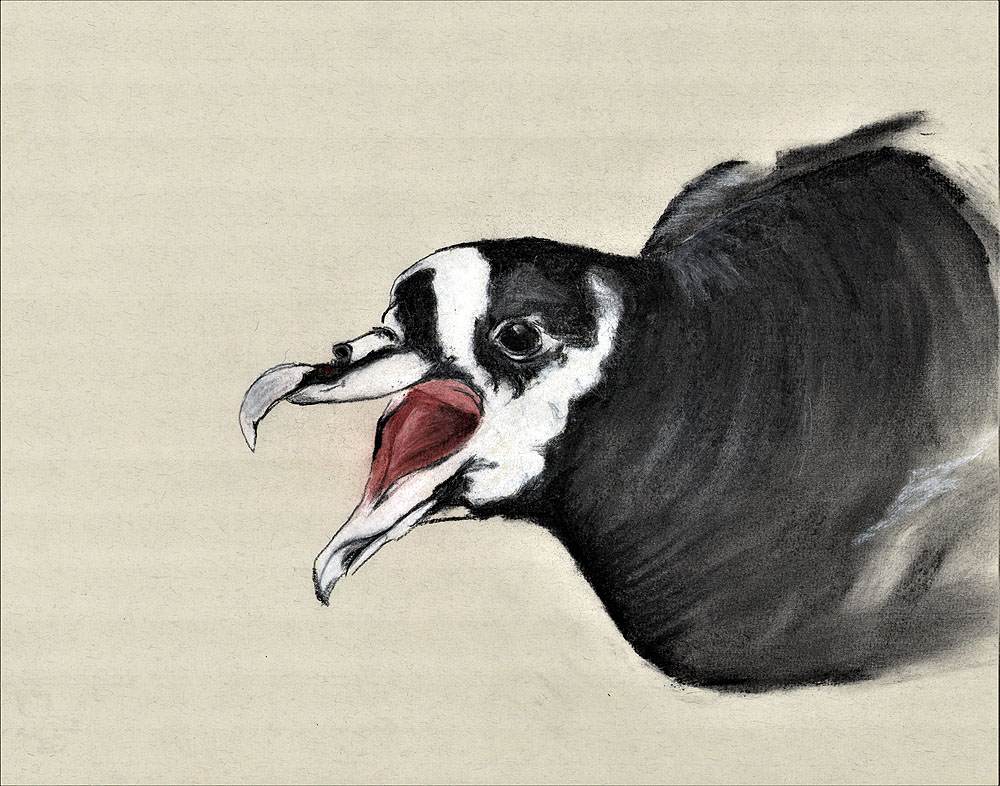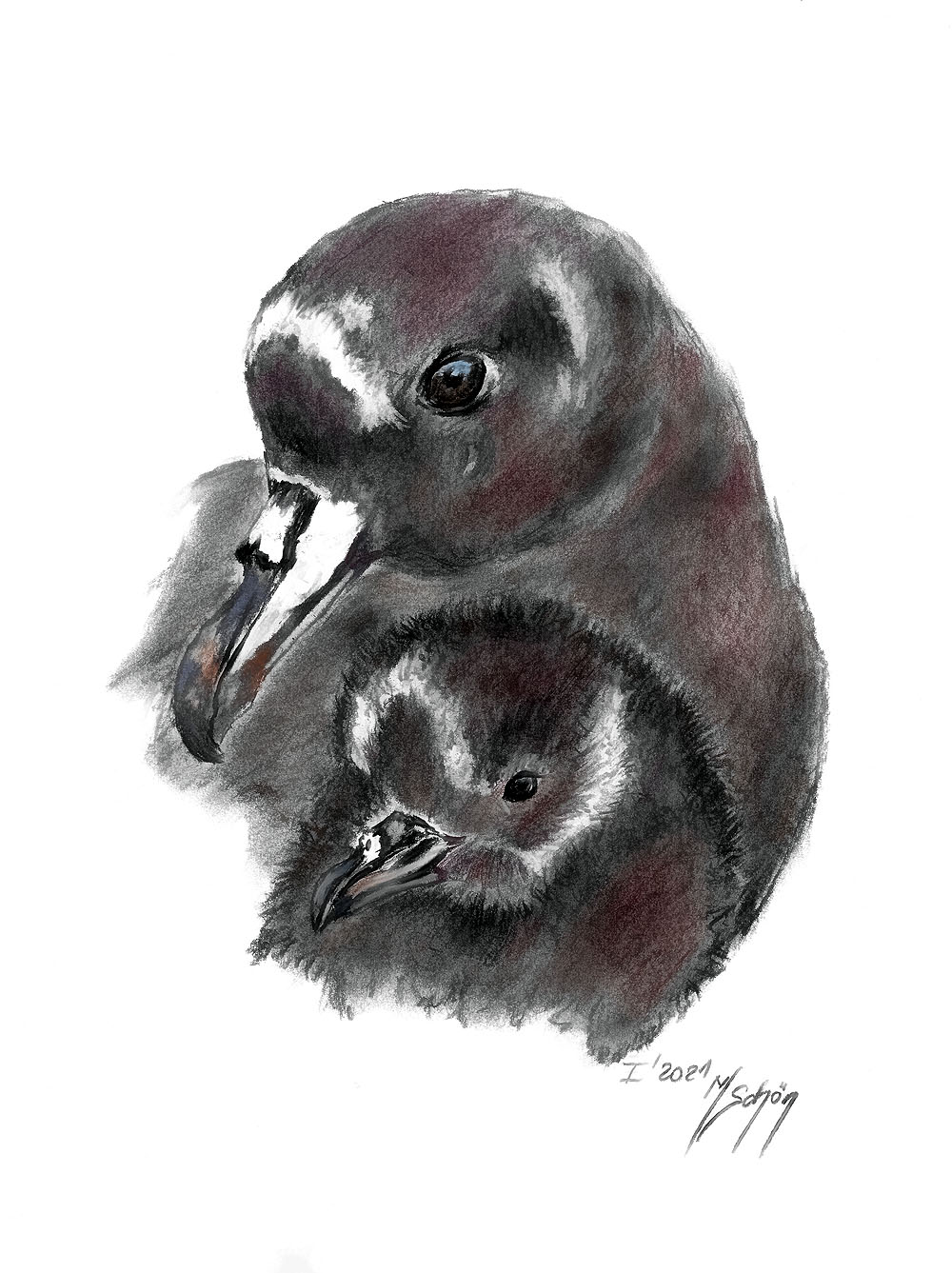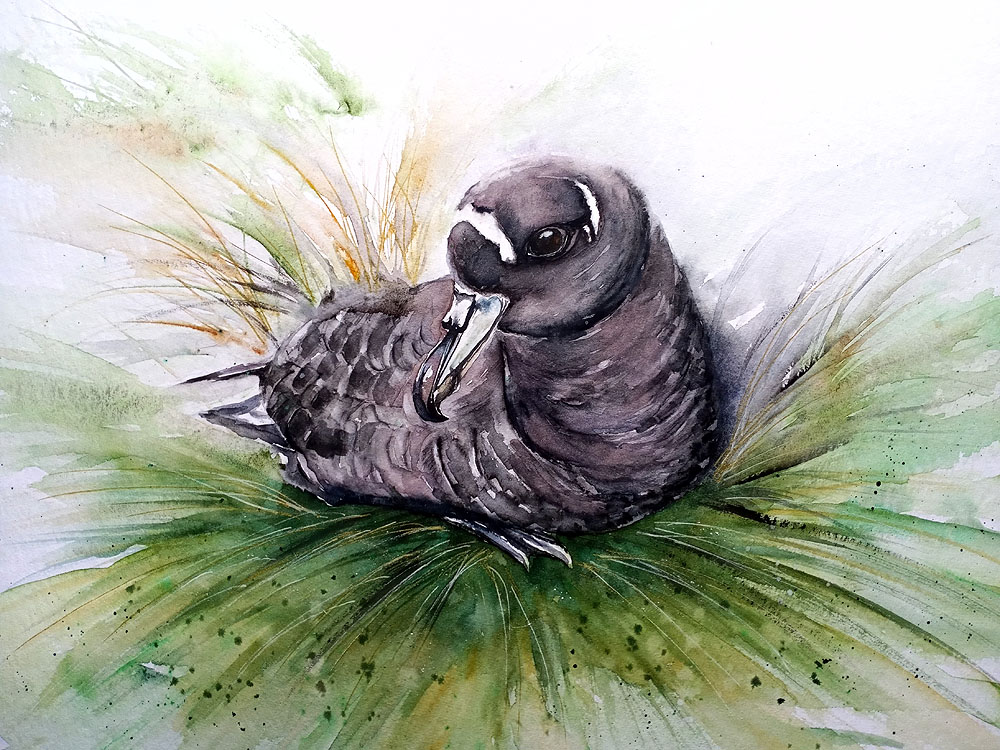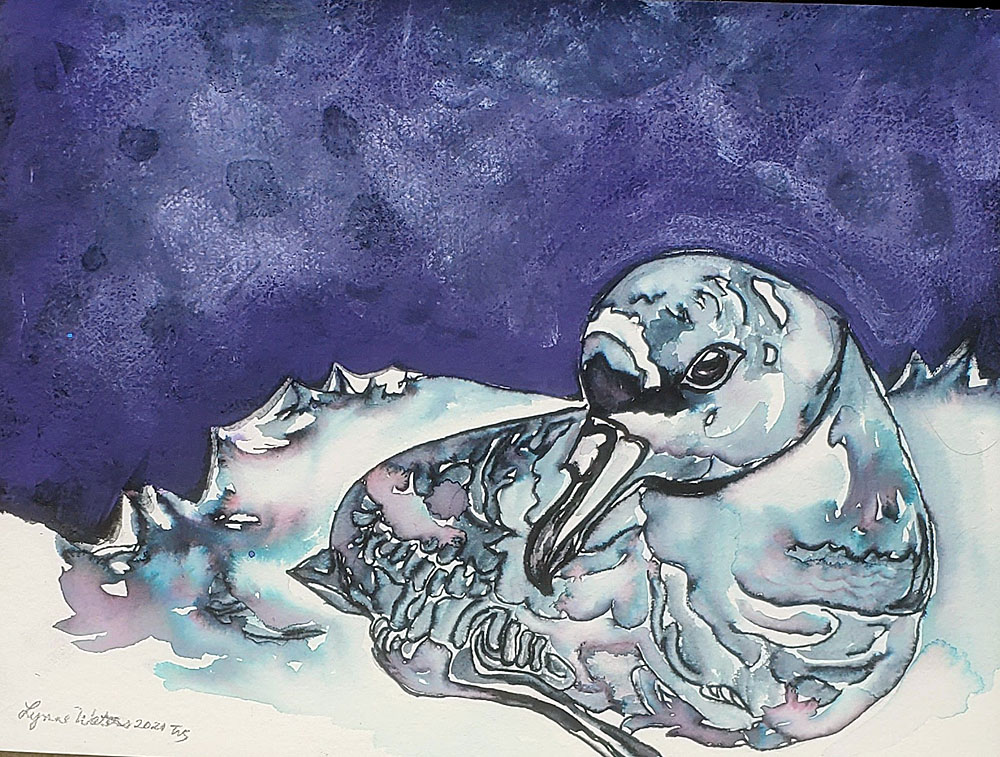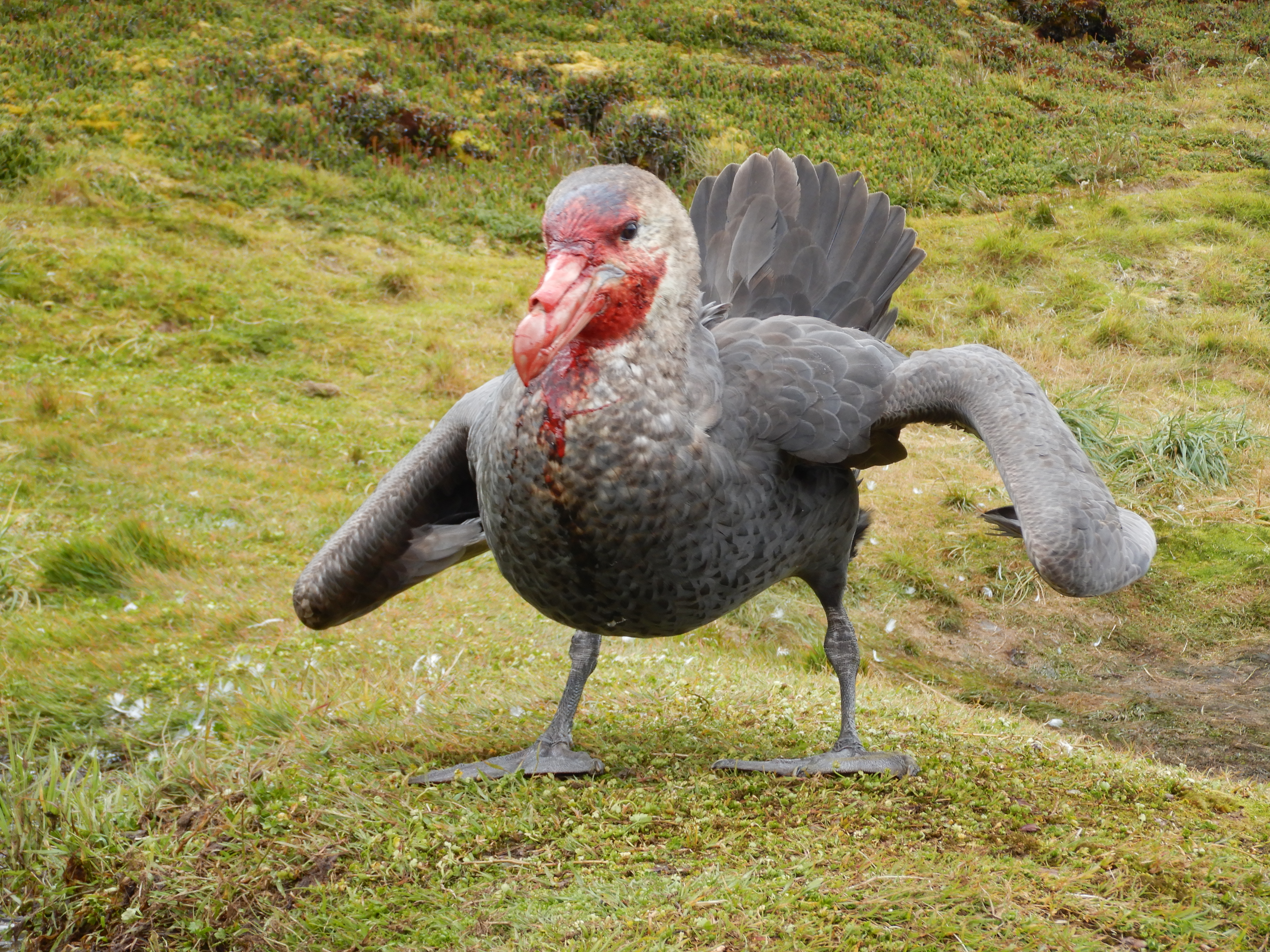
William Mills (British Antarctic Survey, Cambridge, UK) and colleagues have published in the journal Marine Biology on diets of non-threatened (Least Concern) Northern Macronectes halli and Southern M. giganteus Giant Petrels in the South Atlantic.
“Northern Macronectes halli and southern giant petrels M. giganteus are opportunistic predators and the dominant avian scavengers in sub-Antarctic and Antarctic ecosystems. At South Georgia, there are globally important breeding populations of both species; however, no detailed diet study has been carried out at this site for > 35 years. Here, we analysed stomach contents of northern (n = 81) and southern giant petrel (n = 73) chicks at Bird Island, South Georgia (2014/15–2016/17). Specifically, we investigated: (1) interspecific and sexual dietary segregation; (2) diet changes within and among recent years; and (3) long-term diet changes since 1979/80–1980/81. Overall diet composition was similar between species, with penguins comprising approximately half the diet by mass. In both species (but more pronounced in southern giant petrels), prey delivered by female parents included higher proportions (by mass) of penguins and Antarctic krill Euphausia superba, and by male parents included more Antarctic fur seal Arctocephalus gazella carrion and seabirds other than penguins. Consumption of penguins increased, and of seal carrion declined, as chick-rearing progressed, mirroring the decreasing availability of the latter after the peak pupping period in December at South Georgia. Comparisons with data from 1979/80–1980/81 suggest some changes in giant petrel diets; however, these differences were no greater than the typical annual variation, and there were no clear links between diet and breeding allochrony or the differing population trends (more rapid increase in northern than southern giant petrels). The high diet diversity and ability of giant petrels to exploit both carrion and marine prey facilitates coexistence with other sympatric Procellariiformes and explains their favourable population status.’
Southern Giant Petrel by Marion Schön entitled "Bloody Beauty" - Pastels on Pastelmat, from a photograph by Jaimie Cleeland
With thanks to Richard Phillips.
Reference:
Mills, W.F., Morley, T.I., Votier, S.C. & Phillips, R.A. Long‑term inter‑ and intraspecific dietary variation in sibling seabird species. Marine Biology doi.org/10.1007/s00227-021-03839-6.
John Cooper, ACAP Information Officer, 26 February 2021

 English
English  Français
Français  Español
Español 




